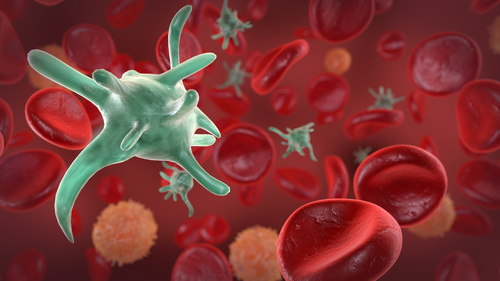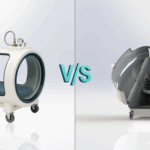Looking at a diseased cell electrochemically, the first thing that differentiates it from normal cells is that the protein coating that surrounds it is contoured distinctly. The disease that has invaded the cell is parasitical, drawing off the cellular electricity or ‘life force’ of its host. This creates ‘cell stress’ and under these conditions, the cell can only manufacture a substandard protein coating for itself. When ozone is introduced into the blood in correct, stable concentrations it is immediately converted into hydroxy-peroxides and other beneficial free radical scavengers.
These hydroxy-peroxides actually seek out and destroy diseased cells, where the cell wall is damaged and therefore easily penetrable, and they enhance the health of normal cells. Ozone’s byproducts have this selectivity because they are the attractive opposites of diseased cells. Cells infected with a virus have a weakened vitality that shows up as lowered levels of enzyme activity. A free radical hydroxy-peroxide sees the diseased cell’s low enzyme ‘flag’ and attacks it.
These diseased cells with lowered enzyme levels are incomplete and are therefore seeking to balance themselves by interacting with the free radical hydroxy-peroxides, which by themselves are also unstable. Both seeking balance, they join together in their eventual mutual destruction and elimination, benefiting the patient.
Diseased versus Healthy Cells
What distinguishes diseased cells from healthy ones? All cells derive their energy from glucose, but healthy cells burn glucose in oxygen by oxidation, while unhealthy cells ferment glucose anaerobically, producing large amounts of lactic acid.
Fermentation produces only 1/6 the energy of oxidation, so cancer cells are perpetually starving for energy, and consequently have huge appetites for sugar. This wasteful metabolism becomes self-sustaining and dominant unless the oxygen level is sharply increased.
Healthy cells which have sufficient oxygen and nutrients manufacture an enzyme coating around them that protects them from invasion.
These enzymes are catalase, reductase, superoxide dismutase and glutathione peroxidase. So long as a cell maintains this enzyme coating around itself, it is safe from invasion by viruses, and ozone cannot harm it.
Oxygen-starved cells are unable to produce enough enzymes to fortify their cell walls and are thus more vulnerable to invasion by the always-present viruses. Disease microbes have no enzyme coating. When ozone is introduced into the area non-invasively through an Ozone Sauna, it attacks microbes without a coating and diseased cells with deficient cell wall enzymes. It oxidizes them, allowing them to be cleared from the body.
Red Blood Cells before and after Ozone Therapy
Oximeter testing, also shows an increase in saturated Oxygen levels, giving the patient added oxygen with subsequent support of T-cell function, energy increase, stamina and strength.
For more information on the 100 Benefits of Ozone Therapy; click here.
Sign up for our weekly newsletter to keep up to date on the latest news:
[contact-form][contact-field label=’Name’ type=’name’ required=’1’/][contact-field label=’Email’ type=’email’ required=’1’/][/contact-form]








1 comment
Join the conversationHannatjie Willemse - September 18, 2016
I have a salon and do ozone treatment with wonderfull results.